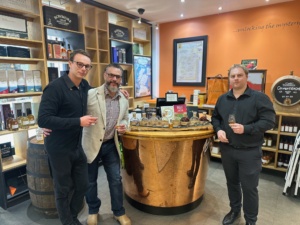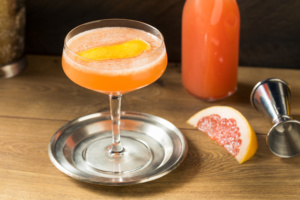High Society: James Bowker Interview
Beautifully balanced and seriously sippable, House of Suntory's James Bowker explains why you should have a whisky highball in hand this summer (and beyond).
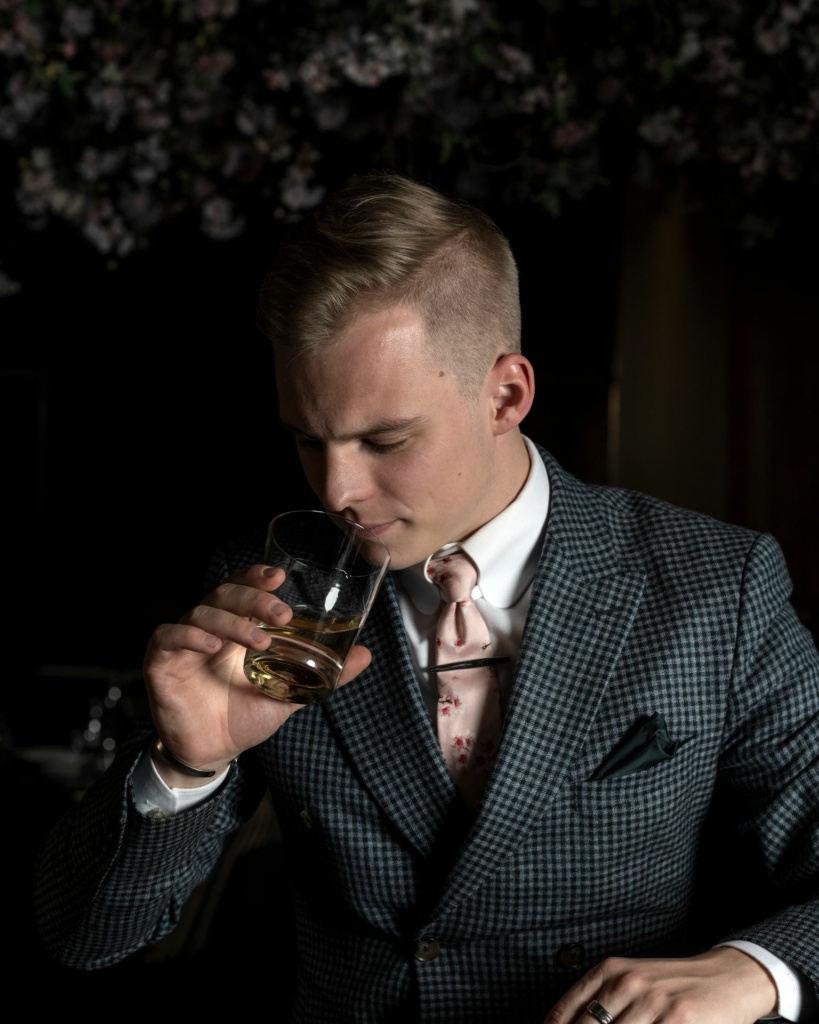 James, fill us in on a little Japanese whisky history. When did Japan first get a taste for whisky?
It was in the latter part of the nineteenth century. Japan came out of a period of isolation called the Edo period which had lasted for 250 years, and when that period ended there was a gradual creeping in of international products, particularly whisky.
Rumours about a foreign alcohol that tasted delicious and was two to three times stronger than anything made locally spread like wildfire and got people really excited, but the problem was that there wasn't very much of it coming into the country.
How did Suntory get involved?
There was a moment in Japanese whisky history called the Ersatz period where people in Japan were trying to work out just how whisky was made, with no real knowledge or understanding. During this time, low-quality and fake whiskies were being made and Suntory's founder was basically the answer to that problem.
Shinjiro Torii originally worked as a pharmacist, and at that time a pharmacy was the only place where you could legally buy foreign alcohol in Japan. Torii therefore had access to whisky that other people just didn't have. He quickly fell in love with it and discovered that he had a real palate for foreign spirits - he actually gained the reputation as "the nose" of Osaka.
Being a pharmacist, Torii also had the ability to understand how this stuff was actually made, as well as a good knowledge of blending due to his experience combining different herbal remedies to create medicine.
In 1899 Torii set up his own business making liqueurs and wines, but his dream was very much to make the first Japanese whisky. Eventually he gathered enough capital to start doing this, employing Masataka Taketsuru on his return from a distilling apprenticeship in Scotland and opening Yamazaki Distillery in 1923.
How does Japanese whisky differ to Scotch?
One of the things Shinjiro Torii discovered early on was that customers buying the whisky he imported from Scotland found it a bit too powerful, and he soon realised that there was this real distinction between the Japanese palate and the western palate.
I always use the example of food. Think of British foods - haggis, roast dinners, English breakfasts - and contrast those rich and indulgent flavours with sashimi, ramen... even tempura is really delicate and light. In the UK we have bitter tea that you need to add milk to, while the Japanese have green tea. We have wine, while they have sake. Shinjiro Torii decided that there needed to be a new category of whisky that was specifically made by the Japanese people, for the Japanese palate.
From day one at Suntory, it was very much the vision not to copy the Scots but rather to make the world's best whisky and make it for the Japanese palate. A part of Japanese culture called "kaizen" requires craftspeople to master the best method that exists and that was why Shinjiro Torii turned to Scotland for inspiration - because he believed that Scotland had the best whisky at that point.
Being more delicate in style, how do the Japanese typically drink their whisky?
Delicate, complex and balanced are the three signifiers that Shinjiro Torii used to describe the Japanese palate and having realised that, there was a much greater understanding of how Japanese whisky would be consumed.
At that time in Europe, whisky was either consumed neat or in a highball. Immediately the highball was much more popular in Japan because of its delicate style, but also because it tied in with traditional ways of drinking in Japan generally. Historically, both local styles of alcohol, sake and shochu, would have been cut with water so it felt very logical for the Japanese to do the same with foreign spirits.
Three main whisky drinking styles soon emerged in Japan and still exist today: the half rock (where whisky is equally cut with water), the mizuwari (which is roughly a three-to-one ratio of whisky to water), and the sodawari or highball ( which is the equivalent of the mizuwari but with soda water).
James, fill us in on a little Japanese whisky history. When did Japan first get a taste for whisky?
It was in the latter part of the nineteenth century. Japan came out of a period of isolation called the Edo period which had lasted for 250 years, and when that period ended there was a gradual creeping in of international products, particularly whisky.
Rumours about a foreign alcohol that tasted delicious and was two to three times stronger than anything made locally spread like wildfire and got people really excited, but the problem was that there wasn't very much of it coming into the country.
How did Suntory get involved?
There was a moment in Japanese whisky history called the Ersatz period where people in Japan were trying to work out just how whisky was made, with no real knowledge or understanding. During this time, low-quality and fake whiskies were being made and Suntory's founder was basically the answer to that problem.
Shinjiro Torii originally worked as a pharmacist, and at that time a pharmacy was the only place where you could legally buy foreign alcohol in Japan. Torii therefore had access to whisky that other people just didn't have. He quickly fell in love with it and discovered that he had a real palate for foreign spirits - he actually gained the reputation as "the nose" of Osaka.
Being a pharmacist, Torii also had the ability to understand how this stuff was actually made, as well as a good knowledge of blending due to his experience combining different herbal remedies to create medicine.
In 1899 Torii set up his own business making liqueurs and wines, but his dream was very much to make the first Japanese whisky. Eventually he gathered enough capital to start doing this, employing Masataka Taketsuru on his return from a distilling apprenticeship in Scotland and opening Yamazaki Distillery in 1923.
How does Japanese whisky differ to Scotch?
One of the things Shinjiro Torii discovered early on was that customers buying the whisky he imported from Scotland found it a bit too powerful, and he soon realised that there was this real distinction between the Japanese palate and the western palate.
I always use the example of food. Think of British foods - haggis, roast dinners, English breakfasts - and contrast those rich and indulgent flavours with sashimi, ramen... even tempura is really delicate and light. In the UK we have bitter tea that you need to add milk to, while the Japanese have green tea. We have wine, while they have sake. Shinjiro Torii decided that there needed to be a new category of whisky that was specifically made by the Japanese people, for the Japanese palate.
From day one at Suntory, it was very much the vision not to copy the Scots but rather to make the world's best whisky and make it for the Japanese palate. A part of Japanese culture called "kaizen" requires craftspeople to master the best method that exists and that was why Shinjiro Torii turned to Scotland for inspiration - because he believed that Scotland had the best whisky at that point.
Being more delicate in style, how do the Japanese typically drink their whisky?
Delicate, complex and balanced are the three signifiers that Shinjiro Torii used to describe the Japanese palate and having realised that, there was a much greater understanding of how Japanese whisky would be consumed.
At that time in Europe, whisky was either consumed neat or in a highball. Immediately the highball was much more popular in Japan because of its delicate style, but also because it tied in with traditional ways of drinking in Japan generally. Historically, both local styles of alcohol, sake and shochu, would have been cut with water so it felt very logical for the Japanese to do the same with foreign spirits.
Three main whisky drinking styles soon emerged in Japan and still exist today: the half rock (where whisky is equally cut with water), the mizuwari (which is roughly a three-to-one ratio of whisky to water), and the sodawari or highball ( which is the equivalent of the mizuwari but with soda water).
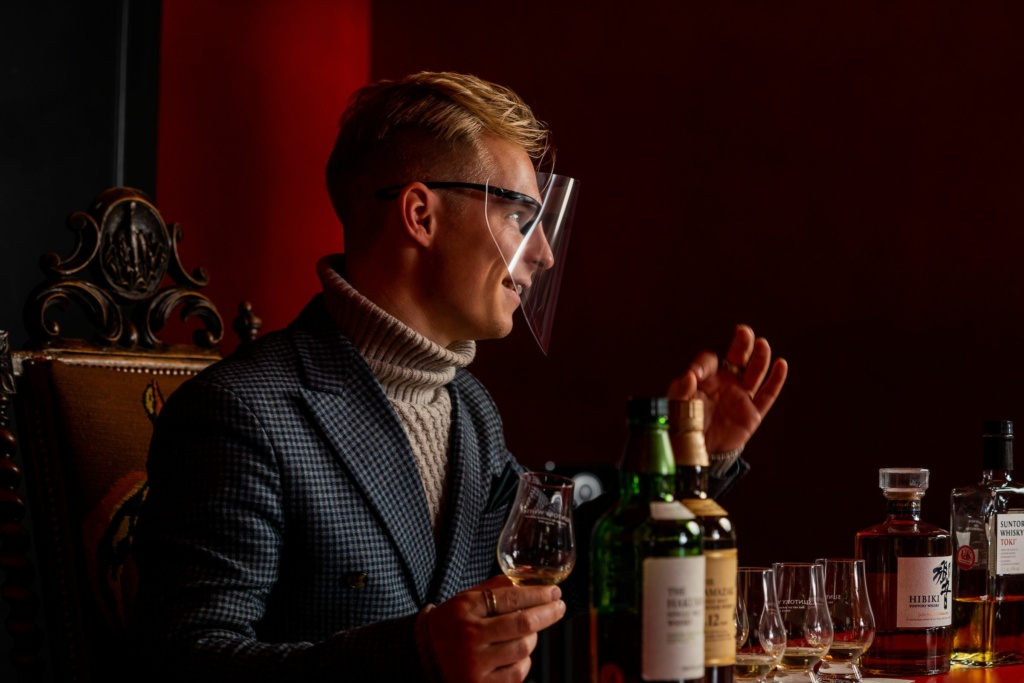 It's interesting to hear that the highball was already being enjoyed in Europe before it made its way to Japan. What is the history of the drink?
The highball is an ancient drink and was by no means invented in Japan, although it was refined there. The drink was originally invented in Britain and became very popular from the late nineteenth century, when ice became much more common. Over the next 40 to 50 years, the highball became more and more popular across Europe - I believe Winston Churchill said Cognac and soda and whisky and soda were his two favourite drinks.
The highball was then introduced to American culture by New York bartender Patrick Duffy who served the drink to British actors working in the city. The highball became hugely popular in America to the point where it was mentioned in F. Scott Fitzgerald's The Great Gatsby as well as being featured in Vogue's Book of Etiquette in 1948 and Esquire's Handbook for Hosts in 1949. It became a symbol of good taste and refinement.
How did the highball become a Suntory perfect serve?
Following Japan's defeat at the end of the Second World War, there was a period of economic boom and massive Americanisation where Japanese culture began embracing the American way of life. It was seen as an opportunity for freedoms that maybe hadn't been experienced in the country in the past.
How should the highball be enjoyed?
The highball is enjoyed exactly the same way a beer is here in the UK. It's cold, it has a similar alcoholic strength, it's got that same carbonation and, like a beer, it just goes really well with food.
One of the main ways the highball is consumed in Japan is at what's called an "izakaya", which is effectively a Japanese pub. Almost anybody that goes for a casual drink after work in Japan will go to an izakaya and enjoy a highball alongside "yakitori", which are barbecued chicken skewers. It's a perfect combination; just delicious.
So, it's not just a summer drink?
It's one of the best-selling drinks in Japan all year round, and it's enjoyed at all hours of the day. Tokyo was probably the first 24/7 city in the world. People who live there regularly finish work at midnight or 1am - and it's still highball time!
It's interesting to hear that the highball was already being enjoyed in Europe before it made its way to Japan. What is the history of the drink?
The highball is an ancient drink and was by no means invented in Japan, although it was refined there. The drink was originally invented in Britain and became very popular from the late nineteenth century, when ice became much more common. Over the next 40 to 50 years, the highball became more and more popular across Europe - I believe Winston Churchill said Cognac and soda and whisky and soda were his two favourite drinks.
The highball was then introduced to American culture by New York bartender Patrick Duffy who served the drink to British actors working in the city. The highball became hugely popular in America to the point where it was mentioned in F. Scott Fitzgerald's The Great Gatsby as well as being featured in Vogue's Book of Etiquette in 1948 and Esquire's Handbook for Hosts in 1949. It became a symbol of good taste and refinement.
How did the highball become a Suntory perfect serve?
Following Japan's defeat at the end of the Second World War, there was a period of economic boom and massive Americanisation where Japanese culture began embracing the American way of life. It was seen as an opportunity for freedoms that maybe hadn't been experienced in the country in the past.
How should the highball be enjoyed?
The highball is enjoyed exactly the same way a beer is here in the UK. It's cold, it has a similar alcoholic strength, it's got that same carbonation and, like a beer, it just goes really well with food.
One of the main ways the highball is consumed in Japan is at what's called an "izakaya", which is effectively a Japanese pub. Almost anybody that goes for a casual drink after work in Japan will go to an izakaya and enjoy a highball alongside "yakitori", which are barbecued chicken skewers. It's a perfect combination; just delicious.
So, it's not just a summer drink?
It's one of the best-selling drinks in Japan all year round, and it's enjoyed at all hours of the day. Tokyo was probably the first 24/7 city in the world. People who live there regularly finish work at midnight or 1am - and it's still highball time!
 What is House of Suntory's perfect highball serve?
Our perfect serve combines one part Suntory Toki Whisky with four parts Merchant's Heart Soda Water, before garnishing with grapefruit zest. Get as much ice as you can fit there and get everything as cold as possible before preparation. Weirdly to us as westerners, your highball whisky would normally be kept in the freezer! The colder the highball, the better the carbonation, resulting in a drink that stays consistent from the first sip until the last.
Why does Suntory whisky lend itself so well to this drink?
At Suntory, we're blending whiskies in such a way that there are layers of flavour which unfold as you take each sip - the whisky doesn't throw everything at you at once. We're aware that the majority of Japanese drinkers will add some amount of water to their whisky, so we want to make sure it unfolds in the most elegant and nuanced way possible.
Minimal and balanced, the highball seems like a drink symbolic of the Japanese culture.
Absolutely. In Japanese culture, huge value is placed on harmony and balance within every element of life - including the whisky drinking experience. One of the big challenges of drinking neat whisky is that it's a bit much for most of us - even for me as a seasoned whisky drinker! With the perfect highball, philosophically you should feel no separation between you and the experience of the whisky's flavour. In Japan, that's why such focus is put on things like the delicacy of the glass and the crystal clearness of the ice, so that if you close your eyes and just take a sip, you feel this moment of absolute harmony with flavour, with nature, and with whisky.
What is House of Suntory's perfect highball serve?
Our perfect serve combines one part Suntory Toki Whisky with four parts Merchant's Heart Soda Water, before garnishing with grapefruit zest. Get as much ice as you can fit there and get everything as cold as possible before preparation. Weirdly to us as westerners, your highball whisky would normally be kept in the freezer! The colder the highball, the better the carbonation, resulting in a drink that stays consistent from the first sip until the last.
Why does Suntory whisky lend itself so well to this drink?
At Suntory, we're blending whiskies in such a way that there are layers of flavour which unfold as you take each sip - the whisky doesn't throw everything at you at once. We're aware that the majority of Japanese drinkers will add some amount of water to their whisky, so we want to make sure it unfolds in the most elegant and nuanced way possible.
Minimal and balanced, the highball seems like a drink symbolic of the Japanese culture.
Absolutely. In Japanese culture, huge value is placed on harmony and balance within every element of life - including the whisky drinking experience. One of the big challenges of drinking neat whisky is that it's a bit much for most of us - even for me as a seasoned whisky drinker! With the perfect highball, philosophically you should feel no separation between you and the experience of the whisky's flavour. In Japan, that's why such focus is put on things like the delicacy of the glass and the crystal clearness of the ice, so that if you close your eyes and just take a sip, you feel this moment of absolute harmony with flavour, with nature, and with whisky.
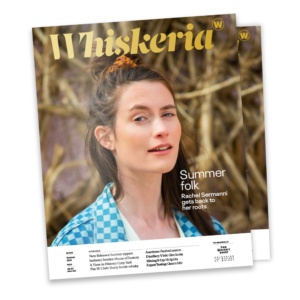 The original feature is from the Summer 2021 edition of Whiskeria, delivered to the door of W Club subscribers and also free with any Whisky Shop purchase in store or online. Click here to read the full Spring 2021 issue of Whiskeria online for free.
The original feature is from the Summer 2021 edition of Whiskeria, delivered to the door of W Club subscribers and also free with any Whisky Shop purchase in store or online. Click here to read the full Spring 2021 issue of Whiskeria online for free. 4.7/5 with 10,000+ reviews
4.7/5 with 10,000+ reviews
